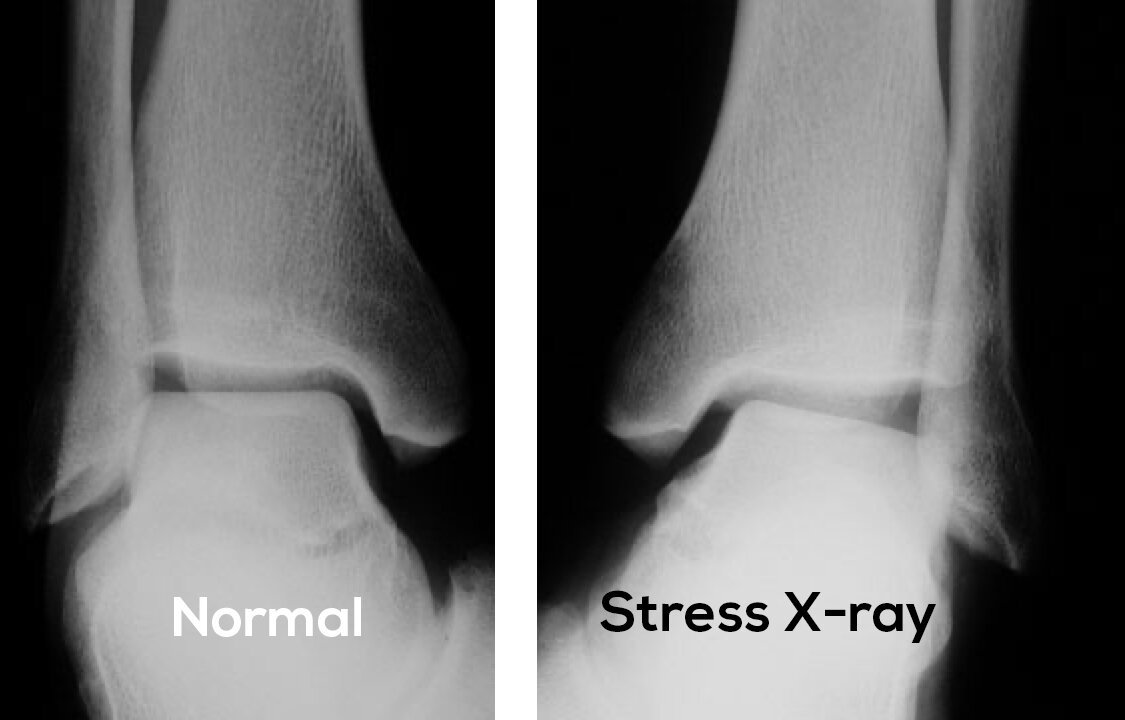What is an Ankle Sprain and how will it affect me?
The ankle is the point where the two long bones (tibia and fibula) of the leg meet the top of the ankle joint (talus). The bones are held in their proper position with strong ligaments that provide support and stability to ankle. Although they have a high tolerance to stretch and flex, ligaments can become damaged or injured by partial or complete overstretch or tearing.
When an ankle sprain is sustained, the bones in the ankle become forced into unnatural positions and results in pain and swelling. In most cases, spraining an ankle will affect but not take away the ability to walk. Only if there is a bone fracture involved will the ability to walk be lost. You may notice your ankle becoming unstable with repeated ankle sprains and feel an instability in your walking or standing posture. This is because the ankle ligaments over-stretches and does not return to its original position leading to instability.
Thankfully, most ankle sprains can be treated at home with ice, rest, compression, and elevating the limb. However, if you experience more severe symptoms such as inability to weight bear, severe pain, and are unable to walk, it is recommended you seek medical advice.
Ankle sprains weaken the ankle joint and makes it more likely the ankle injuries will happen again. Multiple ankle injuries, especially without rehabilitation and treatment, may cause may result in long-term health effects such as arthritis, instability, and chronic pain.
What are the causes of ankle sprains?
Ankle sprains are usually caused by the foot being twisted inwards (on the side of the little toe with the foot soles pointed inwards) or an ‘inversion injury’. Often this may be referred to as “rolled ankle”.
Some common causes and risks of ankle sprains include:
Falling or tripping over; especially on uneven surfaces
Sporting or athletic activities that requires the rolling or twisting manoeuvres of the foot such as basketball or football
Past ankle injuries and poor ankle joint condition
What are some symptoms of ankle sprains?
Pain is the most common first symptom of an ankle sprain. This is followed by redness, swelling, and tenderness of the ankle. You may still be able to bear some weight on the foot but may be walking with a limp.
In cases of severe ankle sprains, you may hear a ‘pop’ sound when sustaining the injury and you may be unable to weight bear at all. In cases like this, you should seek medical attention and evaluation.
Can Ankle Sprains cause permanent damage?
Unfortunately, ankle sprains weaken the ankle joint. It reduces the ability of the ligaments to hold the bones securely in place and after sustaining an ankle injury, you may notice that your ankle becomes ‘loose’ and more susceptible to rolling or ‘giving way’.
You may be able to determine a loose ankle by having someone move your ankle from side to side to test the resistance and strength of the ligaments. Compare this to your other foot (that hasn’t been sprained). Of course, this won’t be possible if you have sprained both ankles. In which case, seek professional evaluation.
How are Ankle Sprains diagnosed?
If not severe, an ankle sprain should start to recover within a few days of applying ice, rest, compression, and elevation. Being able to weight bear and walk (even with a limp) usually means the sprain isn’t severe.
If you experience symptoms such as being unable to bear weight, severe pain and swelling that doesn’t seem to be getting better, then an orthopaedic specialist surgeon will perform a medical examination on your ankle to assess the severity of the sprain.
This includes examination of the ankle and surrounding structures for signs of ligament damage and palpating the ankle to feel where the injuries may have occurred.
The orthopaedic specialist surgeon may also move your foot in different directions to test movement ability and ask you to undergo imaging such as X-ray, MRI, or ultrasound if severe damage is suspected.
How can Ankle Sprains be treated?
The most useful treatment for ankle sprains is the RICE approach.
R - Rest
I - Ice
C - Compression
E - Elevation of the limb
Within a few days, symptoms should improve. You should also consult with a physiotherapist to start ankle strengthening exercises so you can prevent recurrent injuries.
If symptoms persist and you feel that they are not improving after two weeks, then you may need to have further investigations done. The most common surgical investigation is an arthroscopy where a specialist will use minimally invasive keyhole instruments to examine the internals of the ankle. From there, you may opt to have ankle ligament reconstruction surgery to repair any ligament damage or stabilise a loose ankle.
Of course if you’re worried and would like an expert opinion, you can also make an appointment with Associate Professor Kuo. With a professional assessment done, you can be assured that you are on the right path to recovery.
What are surgical treatment options for Ankle Sprains?
Most ankle sprains should heal by themselves with conservative management and you should see improvement within a few days.
If the sprains are recurrent or do not seem to be improving after a few days, there could be more significant ligament injury including rupture or tears that will need surgical intervention.
Ankle ligaments can be surgically repaired with either arthroscopy or open surgery depending on the degree of injury. In most cases, keyhole surgery (arthroscopy) can be used to repair and rejoin damaged or loose ligaments in the ankle joint.
Read our article on Ankle Ligament Surgery.
Here’s what to do next…
Research your condition and treatment options
We provide extensive information about Ankle Ligament Surgery on our procedures page.
Do further research and contact us with any questions you may have.
Book a consultation with Associate Professor Roderick Kuo
Prior to your appointment, please obtain a referral from your General Practitioner. This will allow you to claim a Medicare rebate on the consultation fees.
Call or email our team at Specialty Orthopaedics to book your consultation.
Important: Information is provided for guidance only. Individual circumstances may differ and the best way to approach a condition is by individual medical consultation where a specialist can tailor a treatment plan to suit your needs.
Edited by Dr Roderick Kuo
Last updated: 5/5/24




